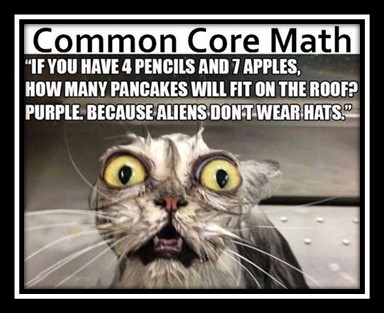Introduction to Chapter 2
Problem Solving and Number Theory; Elementary Education Theme: Multiplication and Division, Fractions
Introduction
It can be really fun to explore patterns and discover new ideas with other students. We hope some of the work you did in chapter one already gave you that great feeling of puzzling through a problem until you found the pattern and figured out what to do.
Do you remember a particular pattern that made you happy? Maybe you remember when you learned the pattern of multiples of 5, how they always end in zero or five: 5, 10, 15, 20, 25, …. It’s fun to chant the numbers out loud to hear the pattern. Or maybe you learned the amazing patterns of the multiples of nines, and the fun way to use your fingers to figure out the answer to a multiple of nines. (If you didn’t learn that one, you will in section one of this chapter!) Or maybe you played “Guess what’s next,” a game that can be played with or without numbers.
On the other hand, maybe, when you saw the title of this chapter, you were thinking of experiences you have had that were more like the poor bewildered cat below.
The cat is complaining about “Common Core Math,” but this is really the feeling that we all get any time something we are trying to do just doesn’t make sense. For the record, we (both authors) generally like the Common Core Math Standards. Complaints about the Standards are often at the root complaints about how hard math is sometimes! We’ve all been there, even those of us who are used to doing well in math. But it’s not just math, everything can be hard at times, if it’s beyond your abilities. One of us also get this feeling of frustration sometimes when trying to fix things around the house, or when trying to put together IKEA furniture. Just like the poor kitty!
The challenge of problem solving is that it’s frustrating if it’s way beyond your abilities and boring if it’s too easy. As teachers and as students, we want to find that sweet spot where a problem is do-able, yet remains interesting and fun, even if we have to work on it for a while.
To make teaching even more challenging, a problem that one student finds fun and challenging can make another student anxious or bored.
No matter which kind of problems you prefer to solve, it’s important to realize that you can have fun and stay interested even if a problem takes more than a minute to solve, and even if the problem does not have one simple solution. Working together can also help turn a “confusing” or “annoying” problem into a “fun” one.
The topics in this chapter will include some interesting kinds of numbers, including primes, figurate numbers and Fibonacci numbers, all of which are rich in patterns and problems to solve. You will learn some common problem-solving techniques that work for all kinds of problem solving situations and at all ability levels, and we’ll work on how to give each other problem solving tips and hints, without giving away the whole answer.
We’ll also look at one of the toughest areas for children: fractions! We’ll approach them from a hands-on, exploratory perspective, so that you can see how to teach them with meaning and make them fun and interesting!


